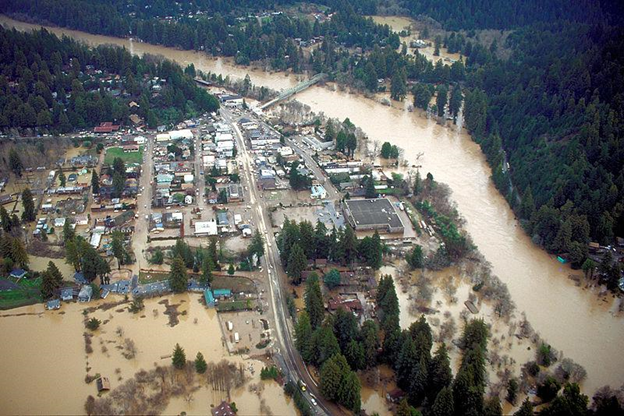June is National Safety Month (NSM), so it’s a great time to review your family’s emergency plan, or your personal one if you live alone. We don’t like thinking about worst case scenarios, but everyone needs a disaster plan, or a bad situation could be needlessly worse.
Ready.gov is a great resource for tips on how you can best prepare for a variety of different types of emergencies, from severe weather to fires and floods. The first thing you want to do is start with a plan, and then you can assemble all of the items and information you’ll need to be as ready as possible.
Ready.gov has a variety of forms that you can download, which make creating your plan easier. These include tips for parents and pet owners, how you can best protect your financial assets, and more.
As you create your emergency preparedness plan, it’s important to answer some key questions:
- How will you get emergency alerts, warnings, and other relevant communications?
- Where will you stay if you can’t remain in your home?
- What will your evacuation route be from your home and, if necessary, your neighborhood?
- How will you communicate with your family members, friends, and neighbors?
- Where will you and your family members or friends meet if you are separated?
Establish your safety network.
As you create your plan, consider your safety network. Do you have friends’, family members’, and coworkers’ phone numbers and email addresses in a place besides your phone in case you lose your phone? Many of us don’t memorize numbers anymore because they’re so easy to access from speed dial on our phones. It’s also important to have neighbors’ contact information in case you need help or you want to check in to see if they do.
Be sure to discuss your emergency plan with the people in your safety network. It’s important to know ahead of time who will assist you with care for your children, parents, pets, and others in the event you can’t be there. For example, who can pick your kids up from school? Who will be able to check in on elderly parents or disabled friends and family members? Who will be able to check on your dog or other pets?
Establish a communication plan and two meeting places.
In the event you don’t have access to your cell phone, consider how you’ll communicate with people in your network. If you can access a social media account like Facebook, that can be a great place to receive and share information. If you don’t have access to a phone or the internet, consider a safe and secure place where you can leave a note.
In addition, it’s helpful to choose a friend or family member who lives out of the area who can serve as a point of contact if you’re unable to connect with people locally. During disasters, sometimes it can be easier to get a phone connection with people out of your area than locally.
You’ll also want to plan on a place to meet outside of your home in the event of a fire or other disaster, such as meeting on the front lawn, at a neighbor’s house, or the closest public shelter or religious services location.
Create an escape plan.
In addition to your communication plan, you’ll want to have an escape plan from both your home and your area. Then, you’ll want to practice the plan with your family or roommates.
The American Red Cross recommends that everyone in your household should know at least two ways to get out of every room in the home.
Home ownership site Angie’s List recommends practicing drills with your family and roommates to see how quickly you can get out of the house, preferably in less than two minutes. In addition, they recommend practicing to crawl quickly on the floor in the event of a fire, as smoke rises.
Put an emergency kit together.
FEMA, the Federal Emergency Management Agency, recommends that every member of your household should have an emergency kit with enough supplies to sustain them for up to 72 hours without help.
You’ll want to assemble these kits far in advance of an emergency and have them available in an easily accessible location where you can grab them quickly, recommends U.S. News. You may use the kits in your home, or you may need them if you’re on the run, so a backpack is an ideal case for your emergency items.
Your emergency kit should contain the following:
- It’s recommended that you have one gallon of water for each person per day to last for three days. If you have pets, you’ll want to have extra water to share with them.
- Household bleach. Bleach can be used to disinfect water. With a medicine dropper, you can drop 16 drops into one gallon of water and it will treat the water.
- Medicine dropper. As noted above, this can be used to disinfect water with bleach.
- You should have enough non-perishable food to last for each family member for three days, and the same goes for your pets.
- Infant formula, diapers, and other baby items if you have infants or small children.
- Paper plates, cups, and utensils.
- Matches in a waterproof container.
- Slow-burning safety candle.
- First aid kit.
- Prescription drugs and medication to last for one week or more for every family member.
- Battery-powered or hand crank radio. A NOAA Weather Radio with a tone alert is a good idea as well.
- Flashlights and extra batteries.
- Swiss Army Knife with a can opener.
- Wrench or pliers to turn off utilities.
- Plastic sheeting and duct tape. This will enable you to build a makeshift shelter.
- Sleeping bags or blankets for everyone in your home.
- Extra clothing, including warm clothing, such as a polar fleece sweater.
- Rain slicker. Rain slickers are highly functional as they can be used as a poncho that covers your backpack, as a ground cover, or even a makeshift shelter.
- Rope to secure items or use to create a shelter.
- Moist towelettes for personal cleaning.
- Garbage bags for sanitation.
- Extra pet leash and harness for all pets.
- N95-rated respirators or P100-rated safety masks. The California Governor’s Office of Emergency Services and the California Department of Public Health recommend these two options for personal respiratory protection in the event of a fire and/or to protect you from air-born communicable diseases.
- Cell phones and extra chargers. As charging cords are easily lost, it’s important to have an extra that stays in your emergency kit. Solar chargers are also a great option in the event the electricity goes out.
- Local area maps, as you may not be able to access a map from your phone.
- Whistle to signal for help.
- There could be situations where ATMs and credit card machines do not work, so having cash on hand is another important safety precaution.
Keep at least a half tank of gas in your car at all times.
In the event you need to leave an area quickly, you may not have time or the ability to get gas. So, it’s a good idea to make it a habit of always having at least a half a tank of gas in your car instead of letting it get to empty before you fill up.
Prepare your home.
In addition to preparing yourself and your family for a disaster, you’ll want to have an emergency plan for your home.
In the event you have to turn off your utilities, such as the electricity, gas, or water, you should know ahead of time how to do so safely. Knowing where the shutoff valves are ahead of time will help to prevent a panic situation during a disaster and having to learn on the fly.
Your should test your smoke alarms twice a year to make sure the batteries are in good condition.
You’ll also want to have at least one fire extinguisher in the home. The kitchen is a good place to keep one, as many home fires start in the kitchen. The bedroom is another good place.
You’ll also want to make sure all fire extinguishers have maintained the optimal pressure level. According to U.S. News, residential fire extinguishers have three main ratings or a combination of them. This dictates what the extinguisher can be used for. For example:
- A rating puts out fires that are fueled by wood, paper, or cloth.
- B rating puts out fires that are fueled by liquids, such as oil or gasoline.
- C rating puts out electrical fires.
An ABC fire extinguisher can handle almost any fire situation in your house. But for the kitchen, fire experts recommend a BC extinguisher, which can form a layer that keeps grease from reigniting.
Depending on where you live, you’ll also want to have a weather-related disaster plan. For example, if your area is prone to flooding, have sand bags and other floor barriers on hand. (And it certainly wouldn’t hurt to have a kayak!) If you live in a hurricane area, plywood to board up windows and use as a flood guard is useful to have on hand, instead of waiting until the last minture to get it when everyone else is. If you live in an area that’s prone to snowstorms, make sure you have a snow shovel.
While it can be scary and unpleasant to think about the worst case scenario, being fully prepared for an emergency is one of the best gifts you can give yourself, your family, and your neighbors.





